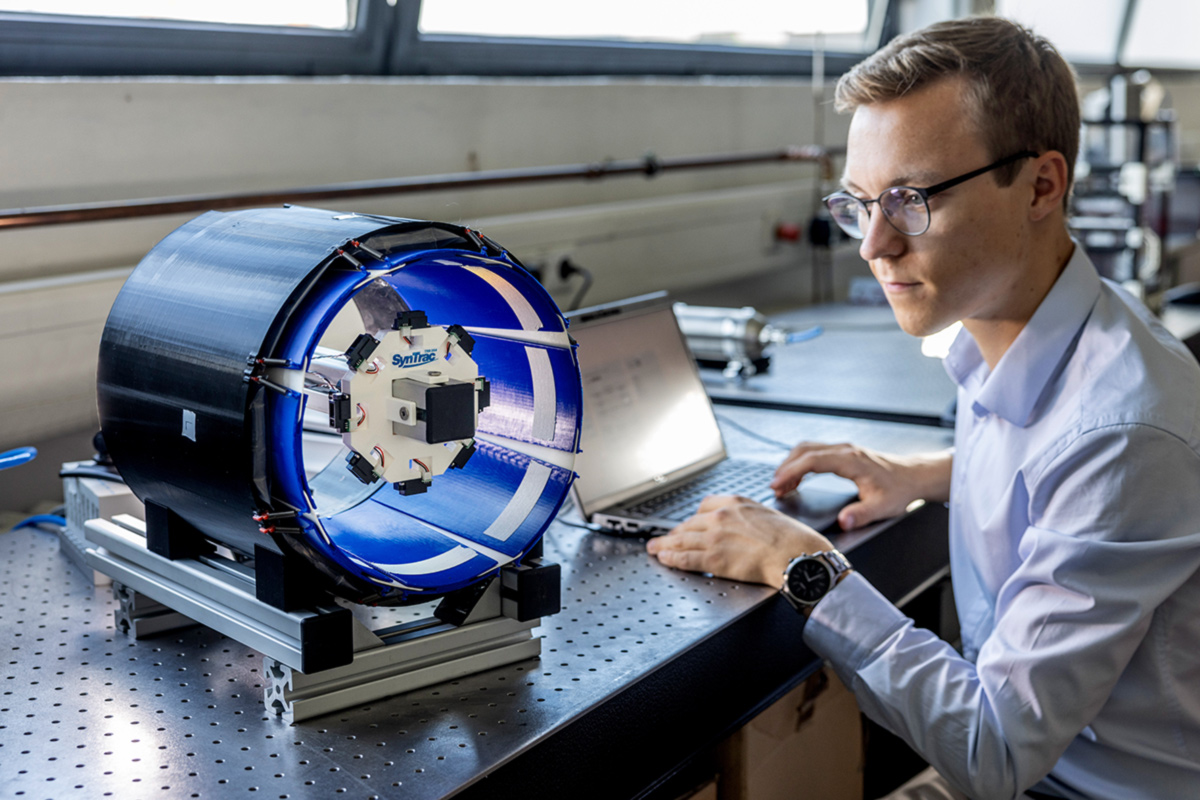B03: Flow control by morphing for future integrated propulsion systems
Shape-morphing technologies with significantly stronger functional integration could provide a clear technological boost. However, for a morphing engine outlet, the morphing structure must be double-curved to form a closed cross section. Project B03 pursues a biomimetic approach of shape morphing based on pressure-actuated cellular structures (PACS). The PACS approach will be applied to double-curved morphing structures with closed cross sections to enable thrust vectoring and a variable nozzle area.
Motivation
Double curved morphing structures based on pressure actuation enable thrust vectoring and variable nozzle area.
- Flow control at engine outlets by shape morphing.
- Geometry adaptation to different operating points.
Objective
- Identification of function principles allowing for double curved morphing structures and defining limitations of those structural concepts.
- Modelling of double curved morphing structures by numerical analysis.
- Validation by experimental testing of functional morphing segments.
- Definition of cross-functional design guidelines for double curved morphing structures enabling:
◦ Thrust vectoring
◦ Variable nozzle area
Approach
The project begins by addressing multidisciplinary requirements and design concepts. This involves establishing the requirements for double curved morphing structures and initiating the design of a double curved Pressure-Actuated Cellular Structure (PACS) actuator using cutting-edge technologies. Alternative design concepts based on pressure actuation are explored, followed by concept evaluations.
Moving forward, the project focuses on virtual testing to understand three-dimensional effects on pressure-actuated structures. This includes developing both high-fidelity Finite Element (FE) models and reduced-order models of double curved pressure-actuated morphing segments. Additionally, a parametric FE model of double curved morphing structures is constructed.
Subsequently, the project shifts its attention to manufacturing and characterizing samples and functional segments. This phase involves selecting appropriate materials and manufacturing processes, characterizing the flexure hinge, and producing a functional segment.
Finally, experimental testing is conducted. This includes designing a test stand and characterizing pressure-actuated segments both with and without external loads.
Cross-functional design guidelines are also developed to ensure comprehensive integration across different aspects of the project.
Role in SynTrac
- A06 aircraft configuration
- B04 fan design
- B01/C06
- waste heat recovery
- C05 cabin noise
- B06 design of aircraft tail








